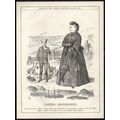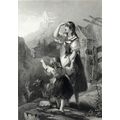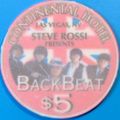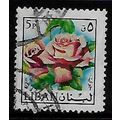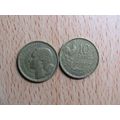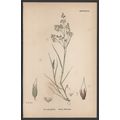Gauguin, Paul - Women of Tahiti - art postcard (Louvre)
- Condition : Unused
- Dispatch : 2 Days
- Brand : None
- ID# : 203816157
- Quantity : 1 item
- Views : 398
- Location : United Kingdom

- Seller : justthebook (+1703)
- Barcode : None
- Start : Fri 20 Aug 2021 14:40:42 (BST)
- Close : Run Until Sold
- Remain : Run Until Sold
More Listings from This Seller view all
Seller's Description
- Art Postcard
- Work of art title: Women of Tahiti
- Artist (if known): Paul Gauguin
- Media or other details: painting
- Publisher / Gallery: Musee du Louvre
- Postally used: no
- Stamp & postmark details (if relevant):
- Size: Modern
- Notes & condition details:
NOTES:
Size: 'Modern' is usually around 6in x 4in or larger / 'Old Standard' is usually around 5½in x 3½in. Larger sizes mentioned, but if you need to know the exact size please ask as this can vary.
All postcards are not totally new and are pre-owned. It's inevitable that older cards may show signs of ageing and use, particularly if sent through the post. Any faults other than normal ageing are noted.
Stock No.: A1298
Please ask if you need any other information and I will do the best I can to answer.
------------------------------------------------
Postage and packing charge should be showing for your location (contact if not sure).
UK - PayPal, Cheque (from UK bank) or postal order
I will give a full refund if you are not fully satisfied with the postcard.
----------------------------------------------
Eugène Henri Paul Gauguin (UK: /ˈɡoʊɡæ̃/, US: /ɡoʊˈɡæ̃/; French: [ø.ʒɛn ɑ̃.ʁi pɔl ɡo.ɡɛ̃]; 7 June 1848 – 8 May 1903) was a French Post-Impressionist artist. Unappreciated until after his death, Gauguin is now recognized for his experimental use of color and Synthetist style that were distinct from Impressionism. Toward the end of his life, he spent ten years in French Polynesia. The paintings from this time depict people or landscapes from that region.
His work was influential on the French avant-garde and many modern artists, such as Pablo Picasso and Henri Matisse, and he is well known for his relationship with Vincent and Theo van Gogh. Gauguin's art became popular after his death, partially from the efforts of dealer Ambroise Vollard, who organized exhibitions of his work late in his career and assisted in organizing two important posthumous exhibitions in Paris.[1][2]
Gauguin was an important figure in the Symbolist movement as a painter, sculptor, printmaker, ceramist, and writer. His expression of the inherent meaning of the subjects in his paintings, under the influence of the cloisonnist style, paved the way for Primitivism and the return to the pastoral. He was also an influential proponent of wood engraving and woodcuts as art forms.[3][4]
.....
Gauguin set out for Tahiti again on 28 June 1895. His return is characterised by Thomson as an essentially negative one, his disillusionment with the Paris art scene compounded by two attacks on him in the same issue of Mercure de France;[112][113] one by Emile Bernard, the other by Camille Mauclair. Mathews remarks that his isolation in Paris had become so bitter that he had no choice but to try to reclaim his place in Tahiti society.[114][115]
He arrived in September 1895 and was to spend the next six years living, for the most part, an apparently comfortable life as an artist-colon near, or at times in, Papeete. During this time he was able to support himself with an increasingly steady stream of sales and the support of friends and well-wishers, though there was a period of time 1898–1899 when he felt compelled to take a desk job in Papeete, of which there is not much record. He built a spacious reed and thatch house at Puna'auia in an affluent area ten miles east of Papeete, settled by wealthy families, in which he installed a large studio, sparing no expense. Jules Agostini, an acquaintance of Gauguin's and an accomplished amateur photographer, photographed the house in 1896.[116][117][118] Later a sale of land obliged him to build a new one in the same neighbourhood.[119][120]
He maintained a horse and trap, so was in a position to travel daily to Papeete to participate in the social life of the colony should he wish. He subscribed to the Mercure de France (indeed was a shareholder), by then France's foremost critical journal, and kept up an active correspondence with fellow artists, dealers, critics, and patrons in Paris.[121] During his year in Papeete and thereafter, he played an increasing role in local politics, contributing abrasively to a local journal opposed to the colonial government, Les Guêpes (The Wasps), that had recently been formed, and eventually edited his own monthly publication Le Sourire: Journal sérieux (The Smile: A Serious Newspaper), later titled simply Journal méchant (A Wicked Newspaper).[122] A certain amount of artwork and woodcuts from his newspaper survive.[123] In February 1900 he became the editor of Les Guêpes itself, for which he drew a salary, and he continued as editor until he left Tahiti in September 1901. The paper under his editorship was noted for its scurrilous attacks on the governor and officialdom in general, but was not in fact a champion of native causes, although perceived as such nevertheless.[124][125]
For the first year at least he produced no paintings, informing Monfreid that he proposed henceforth to concentrate on sculpture. Few of his wooden carvings from this period survive, most of them collected by Monfreid. Thomson cites Oyez Hui Iesu (Christ on the Cross), a wooden cylinder half a metre (20") tall featuring a curious hybrid of religious motifs. The cylinder may have been inspired by similar symbolic carvings in Brittany, such as at Pleumeur-Bodou, where ancient menhirs have been Christianised by local craftsmen.[126] When he resumed painting, it was to continue his long-standing series of sexually charged nudes in paintings such as Te tamari no atua (Son of God) and O Taiti (Nevermore). Thomson observes a progression in complexity.[127] Mathews notes a return to Christian symbolism that would have endeared him to the colonists of the time, now anxious to preserve what was left of native culture by stressing the universality of religious principles. In these paintings, Gauguin was addressing an audience amongst his fellow colonists in Papeete, not his former avant-garde audience in Paris.[128][129]
His health took a decided turn for the worse and he was hospitalised several times for a variety of ailments. While he was in France, he had his ankle shattered in a drunken brawl on a seaside visit to Concarneau.[130] The injury, an open fracture, never healed properly. Then painful and debilitating sores that restricted his movement began erupting up and down his legs. These were treated with arsenic. Gauguin blamed the tropical climate and described the sores as "eczema", but his biographers agree this must have been the progress of syphilis.[90][131][b]
Listing Information
| Listing Type | Gallery Listing |
| Listing ID# | 203816157 |
| Start Time | Fri 20 Aug 2021 14:40:42 (BST) |
| Close Time | Run Until Sold |
| Starting Bid | Fixed Price (no bidding) |
| Item Condition | Unused |
| Bids | 0 |
| Views | 398 |
| Dispatch Time | 2 Days |
| Quantity | 1 |
| Location | United Kingdom |
| Auto Extend | No |


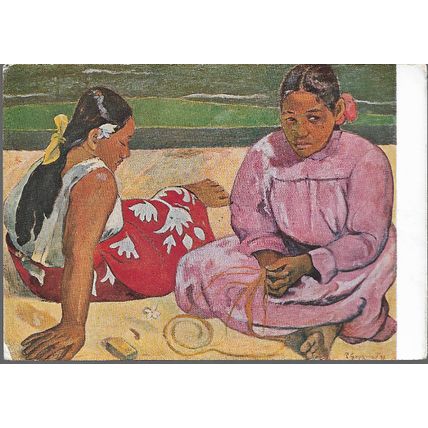

 for 1 item(s)
for 1 item(s)








